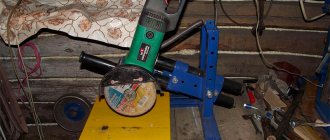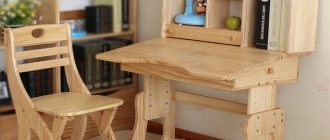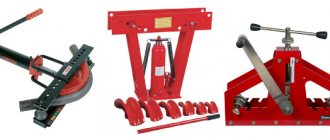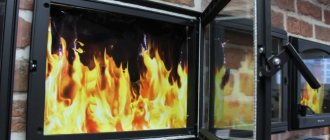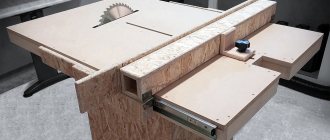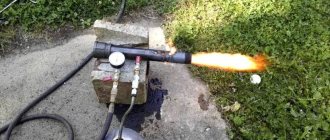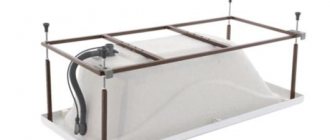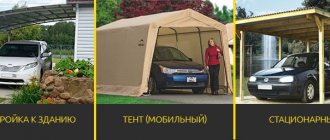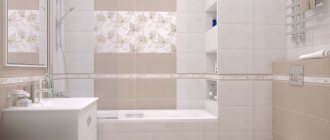How to make a cinder block machine
First, let's decide what goals we set for ourselves. If we need to build a small utility room, a barn, a summer kitchen or a temporary shed, this is one thing. In the same case, if we are going to sell cinder blocks, then the approach to its production should be completely different. Firstly, mass production of cinder blocks requires stability of the recipe, otherwise it will be simply impossible to produce high-quality cinder blocks. Secondly, the machine for making cinder blocks with your own hands, the drawings of which we have given right here, is not intended for large-scale production for obvious reasons.
The reliability and performance of a machine assembled from just about anything cannot be compared with a machine made in production conditions, where there is at least a hint of a quality guarantee. However, making a couple of hundred cinder blocks is not prohibited for anyone yet, so we present drawings with dimensions for a vibrating machine.
Homemade product
In addition to what we described earlier, you can make a homemade machine for cinder blocks, only this will require experience in welding and “friendship” with connecting the device to the network.
It cannot be said that this process (even taking into account your experience, if any) can be called easy, but we will still try to help:
- First , find a drawing of a cinder block machine on the Internet.
- Secondly , purchase all the materials, mainly metal sheets, metal tubes and wires. Don’t forget about the vibrator motor, which is freely sold in stores.
- Thirdly , decide on the size of future blocks.
For the work you will need a welding machine, an electric grinder and metal scissors, and, of course, instructions for use.
Do-it-yourself cinder block manufacturing technology
You can make a cinder block in a chicken coop, depending on what quality requirements you place on it. The general principles and technology for making cinder blocks are no different from industrial ones. Cinder block has standard sizes, shape and characteristics. We can achieve the shape ourselves, depending on the level of skill and degree of proficiency in welding, lathe, grinder and basic metalwork tools.
Be that as it may, the cinder block should measure 39x19x188 and have three holes in the body. These are linear characteristics only. If we talk about physical and technical issues, there is no guarantee that a garage cinder block will meet the standards. In any case, it will be different from the industrial one, for better or for worse.
To make a mixture for cinder block, the following materials are used:
- Slag.
- Sand.
- Cement.
- Modifying additives.
The correct cinder block can only be obtained using the vibration pressing method, which is worth familiarizing yourself with in more detail.
Equipment for cinder blocks, sand blocks Comanche-4 euros (Own Mini-Plant)
Vibrating machine Comanche-4 euro is shipped directly from the manufacturer in Krasnoyarsk.
Small-sized machine of lever-retractable type with mechanized clamp COMANCH-4 euro
for the production of wall blocks (stones). Allows you to form 4 hollow blocks with four oblong voids per cycle. An inexpensive model with which you can easily, in a few days, produce the required number of sand blocks/cinder blocks for building a house, garage and other structures. To make wall stones, you can use slag, ash, screenings, sand, expanded clay or other filler at your discretion.
The performance of the equipment will depend only on you and the performance of the concrete mixer (mortar mixer). On average, our customers produce 100-120 blocks per hour using this type of equipment, which allows them to fully satisfy the need for them in just 1-3 weeks. An excellent solution for individual developers, summer residents and gardeners. A significant difference from the Mars cinder block machine is the presence of a mechanized clamp on the Comanche-4 machine, which allows the production of cinder blocks/sand blocks with less labor.
Upon request, we will send you a calculation of the cost of production of blocks (business plan for the production of cinder blocks) for FREE! Request form at the bottom of the page
You will be able to produce the following types of blocks:
The machine is manufactured using modern high-precision equipment, the void formers are manufactured strictly in accordance with GOST. On the cinder block machine Comanche-4 euro, you can produce the following types of blocks:
- cinder blocks
- sand blocks
- screening blocks
- ash blocks
- expanded clay blocks
Cinder block is a wall block that is produced by vibration forming. In addition to this method, a method of simple shrinkage in the dies of a cinder block machine is used. The dimensions of the cinder blocks are 190*190*390 mm.
In general, the word cinder block has long ceased to carry exactly the meaning that was originally intended in the meaning of cinder block, as a material in the production of which slag was used. Now when they say cinder block, they mean numerous types of wall blocks, such as sand block, ash block, screening block, expanded clay block and, of course, cinder block.
The production of these types of wall blocks and wall stones is possible both on a factory scale and in a small construction site, small room, garden plot, summer cottage, garage, farmstead. It was precisely for such purposes that the so-called machines for the production of cinder blocks and sand blocks were invented many years ago. Some machine tool manufacturers, in order to show that they sell machines for producing blocks without a vibration motor, are cheaper.
However, a real cinder block machine must be equipped with a vibration motor.
The block machine, or as someone calls it, the block machine is produced for one block, 2-block, three-block or four-block. Of course, there are models for a larger number of blocks, but the feasibility of their use is highly questionable due to increased labor costs.
Cinder block machines can be divided into several groups:
- Portable machines (gnome, block master, developer's dream) for one block; their undeniable advantage is their relatively low weight, simplicity, cost, and mobility.
- Mobile cinder block machines of lever-retractable type for one or several blocks (Mars, tornado, Comanche, IKS, laying hen, dragon). A small initial investment, but you need to take into account that for this type of equipment, you need a flat area for making blocks.
- Stationary machines. They are much more expensive and more labor-intensive to maintain. They do not require large areas; as a rule, the placement of such a cinder block machine will require 1-4 square meters, as well as an area for storing sand blocks, cinder blocks, screening blocks, etc. A significant disadvantage is that the blocks need to be removed immediately (while still damp), several pieces on a pallet, and this is very labor-intensive and difficult.
All types of cinder block machines can produce solid blocks, half-blocks, and hollow blocks. Hollow blocks can be produced in different types. The most popular are with rectangular, square, round voids, it all depends on the type of void formers used. The easiest to manufacture are cinder blocks with round voids.
A modern cinder block has a very precise geometric shape, as it is produced on equipment in the manufacture of which laser cutting of metal was used.
To make a screening block, sand block, sawdust block, cinder block, etc., you will need an appropriate filler: slag, sawdust, ash, screenings, this list can be continued for a very long time, since many materials can be used as a filler. Cement is used as a binder. Water is also used.
Today, expanded clay block, screening block, cinder block, sand block are used everywhere - for the construction of garages, dachas, fences, various buildings, houses. The main advantage of cinder blocks is the cost of materials and ease of laying, which does not require skilled workers.
If you buy a cinder block machine and make the blocks yourself, then you can reduce their cost by half, each block will cost you 14-15 rubles.
For example, the Comanche-4 vibrating machine allows you to produce 4 blocks in 2 minutes, which is 120 blocks of a very popular building material and in demand per hour. However, this can be a very good source of income, if you take into account the market value of the blocks of 32-40 rubles.
Which block machine to buy and where is up to you to decide, based on your goals and objectives. It’s just that at GruzoTech it’s profitable: low price, delivery within the Russian Federation, warranty, after-sales service.
What is a vibropress
Roughly speaking, a vibropress is a powerful table, the tabletop of which is suspended on springs or in another way. The vibration of the tabletop occurs due to a shift in the center of gravity in the eccentric, which is attached to the output shaft of the electric motor.
There are several types of suspension of a vibrating plate - spring suspension, on rubber cushions, or cables. A strong frame must stand securely and steadily on the ground while the vibrating plate compacts the cinder concrete mixture. In industrially manufactured machines, a balancer with a shifted center of gravity is installed directly under the vibrating plate and is rigidly attached to it. Homemade vibrating tables use different balancer drive schemes, but basically it is a belt drive, and this design has the reliability and quality of cinder block manufacturing.
How to make a matrix with your own hands
The mold for making a cinder block is the most important thing in the process and the most important thing in the configuration of the machine. Without the correct shape, the whole point of making a cinder block yourself becomes a useless circle of Skillful Hands. The more irregularities and voids there are in the cinder block, the longer the wall will take to build, and the poorer the quality of the masonry will be. During the manufacturing process on a vibrating table, slag concrete tends to shrink, and this is quite natural, since the whole point of the vibrating table is to compact the solution as much as possible, driving all the air out of it.
If the matrix does not take this into account, the cinder blocks will be of different sizes, and it will be very difficult to make normal masonry from them. Therefore, professional machines also use a press to quickly stabilize the mixture. The matrix drawings and the step-by-step process of its manufacture require no explanation. Everything is clearly visible in the photo, and by observing these dimensions, you will get the perfect cinder block.
Pros and cons of making your own
There are several advantages to making your own cinder block machine:
- reducing the cost of the construction process from homemade blocks;
- the ability to make a machine to suit your needs;
- the ability to equip the equipment with the necessary containers at your request;
- the ability to make a new matrix if it becomes unusable.
There are also disadvantages, including the length of time it takes to manufacture the machine and possible mistakes made due to inexperience.
Composition of the mixture for cinder block
There is no single universal composition. The most important component of cinder concrete is cement. The slag can be any material:
- coal ash;
- blast furnace slag;
- expanded clay;
- granulated slag;
- boiler slag;
- processed sawdust.
As well as a wide variety of mixtures of these slags. As a rule, the cement used is M400 grade, and sifted quartz sand is preferable. It is mandatory to add plasticizers to the solution, modifying additives that change the properties of slag concrete depending on specific circumstances. It is recommended to follow the following mixing proportions:
- slag - 7 parts;
- cement M400 - 1.5 parts;
- sand - 2 parts;
- water - as needed, but no more than 3 parts.
As you can see, making a cinder block with your own hands is not so simple, but if you try and show patience and skill, everything will definitely work out.
Making a vibratory pressing machine
Adding a slag concrete vibrator to the above-described production scheme provides the opportunity to significantly improve the quality of products and at the same time speed up the process.
It is not difficult to assemble such a machine; if you follow all the recommendations, this equipment will work no worse than its factory counterparts. The simplest version of a vibrocompression machine involves the use of a homemade matrix, a vibrator and a hand press. To reduce physical stress, the manual press can be improved by using a lever system.
Drawing of a homemade machine with a vibration motor for making cinder blocks and expanded clay blocks
A set of tools and materials necessary for the manufacture of a vibration machine with a metal mold:
- welding machine;
- Bulgarian,
- a set of keys;
- vice;
- sheet metal with a thickness of at least 3 mm;
- pipes for creating voids with a diameter of 8-10 mm;
- channels, strips of metal;
- low-power electric motor (up to 1 kW);
- connecting elements (bolts, nuts, cotter pins).
The main element of the machine for making blocks with your own hands is a matrix, the dimensions and shape of which are selected based on production needs.
The sequence of actions when making a homemade vibrating machine:
- Using a grinder, we cut out the walls of the matrix from sheet material. If the mold is intended for the manufacture of several block products, we provide for the presence of the corresponding number of partitions in the matrix.
- We cut off the required number of blanks from the pipe (at the rate of 3 pieces per brick), the height of which should be 3-5 mm less than the height of the matrix. The taper of the pipes is achieved using the following technique: cut the pipe in half and crimp the workpiece in a vice (for thick-walled pipes you can use a lathe).
Drawing for the manufacture of a machine with lightweight extrusion of building blocks
- Each pipe section is welded tightly on both sides.
- We weld the plates to the pipes, connecting them together. For fastening to walls, it is better to provide a removable connection, which will allow, if necessary, to remove the limiters for the production of monolithic cinder blocks.
- Using welding, we attach bolts for attaching the electric motor to the long outer wall.
- We weld a metal apron on top of the form.
- We make a press in the form of a thick-walled plate, provide for the presence of holes with a diameter slightly larger than the smaller diameter of the limiter pipes (so that the press enters the matrix at a distance of no more than 50 mm).
- We weld the handles to the press.
- We install the motor. We weld an eccentric onto the electric motor shaft (ordinary bolts are suitable as material for the eccentric; they are welded parallel to the shaft and leave room for screwing on the nuts, which will allow you to adjust the amplitude of vibrations).
- We thoroughly clean the device, polish the surfaces, and paint the homemade unit for the blocks.
